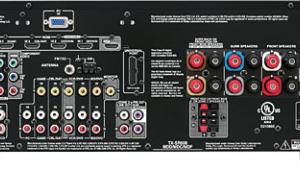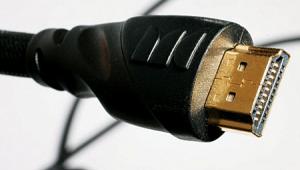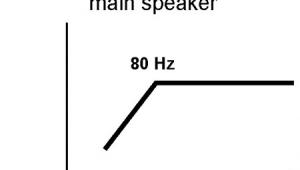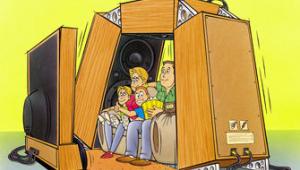Room Acoustics
 You've installed your speakers, but your room still doesn't sound right. In this installment, we show you how to tweak your room's sound with acoustics.
You've installed your speakers, but your room still doesn't sound right. In this installment, we show you how to tweak your room's sound with acoustics.
It's got a greater effect on the ultimate sound of your home theater than almost any other single component. It can make great speakers sound like garbage and the most carefully designed subwoofer sound boomy. What is this mysterious component that can make or break your home theater? It's not really a component at all. It's the room itself. The good news is that you don't have to sit back and let it wreak havoc on your home theater system.
The Basics
The goal for a good-sounding room is to achieve a fairly flat in-room frequency response. If you played pink noise (noise with equal power per octave) through your speakers and plotted your room's frequency response, you'd want the line to be as flat as possible, with few peaks and valleys. Where frequency response peaks and valleys did exist, you'd want them to be as shallow as possible.
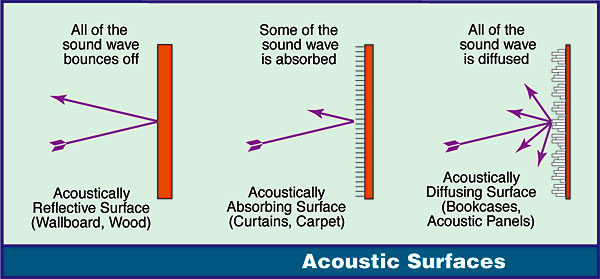
Acoustic problems are caused by standing waves and sound reverberation in the room. To a great extent, you can minimize the effects of such problems by using a few basic strategies: interior wall treatment, room size and shape optimization, and proper location of seating and speakers.
Hopefully, you have already heeded our advice in previous columns with regard to room size and shape optimization, as well as speaker location. (You can see previous columns at www.audiovideointeriors.com for more information on correct speaker and seating placement.) In this column, we'll deal with acoustic wall treatments only.
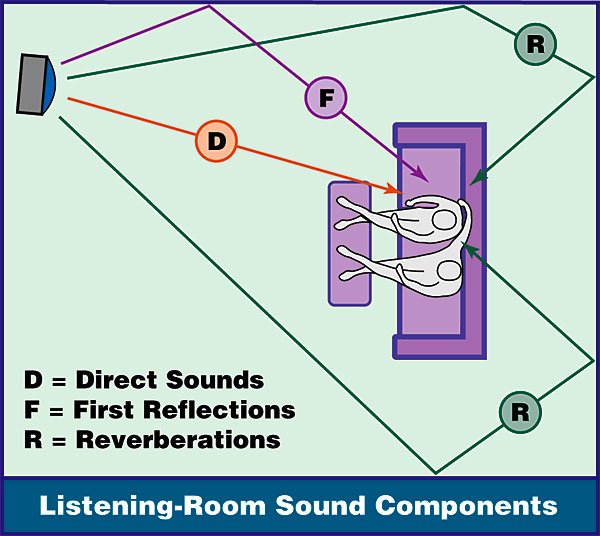
Much like Tigger, sound bounces—unless you make it stop. Once the sound leaves your speakers, it travels through the air, bouncing off of any surface it comes into contact with. Then it bounces off of more surfaces, and so on. While some of this bouncing is good and makes the audio sound natural, too much is bad. The key here is balance. You want some bouncing, or reverberant, sound, but not too much.
Absorption
For practical purposes, we are going to talk about two basic types of treatments in this article, absorptive and diffusive materials. The most commonly used acoustic panels for home theater applications are absorptive materials. These, as the name suggests, absorb sound hitting the panel. All frequencies are not absorbed equally, however. The type and thickness of the material determine the effectiveness of the absorption. All things being equal, a thicker panel will absorb sound down to a lower frequency. For example, the commonly used 1-inch-thick packed-fiberglass acoustic panels attenuate frequencies down to around 1 kilohertz. This is a function of the panel's thickness and the length of the sound wave at the given frequency. As the thickness doubles, the lower limit of the effective absorption frequency is halved. The progression is fairly linear, such that a 2-inch-thick panel will attenuate down to 500 hertz, and so on.
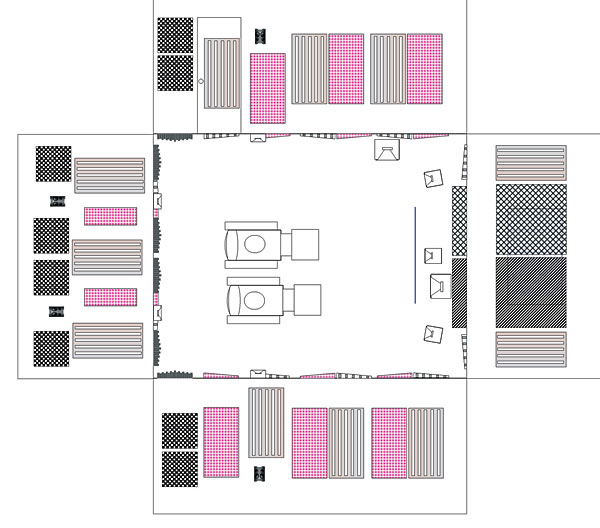
Absorptive panels kill the notorious first reflection. Sound leaving your speakers takes multiple paths to your ears. There's the direct path, from the speaker straight to your ear, and several longer paths, which sound takes when it reflects off of one or more surfaces on its way to you. The first reflection is the one that reflects only once on its way to you. The most commonly treated first-reflection point is on the wall adjacent to the left and right speakers.
Here's why it's important to treat this area. Because the same sound travels two different paths to reach your ears after it leaves the speaker, it arrives at slightly different times. The result is sound that can be muddy and indistinct. In addition, if the first reflection arrives at your ears within 10 to 20 milliseconds of the direct sound, it can affect your brain's ability to perceive spatial cues. You can have problems correctly localizing the sound. If you're having problems with dialogue intelligibility, the natural reaction is to turn up the volume. The problem is that increasing the volume can make the problem worse.
A simple but effective trick for locating the first-reflection point is to sit in the primary seating position and have a friend move a mirror along the side wall of your theater. Just look into the mirror until you can see the respective front speaker. Ta-da! That's where you'll center the acoustic panel. There's no need to completely cover the wall. A panel just a few feet wide and 4 to 8 feet high will suffice, depending on your theater's décor and wall height.
Mounting the panels is simple. You can use construction adhesive, but you'd better be really happy with the look and placement, because, once they're up, chunks of drywall will come off of your wall when you remove the adhesive. A less severe method is to use metal mounting clips that screw into your wall. You then simply press the panels onto the clips. Another method that works well and allows more material thickness is to remove a section of drywall and fill the walls with acoustic-panel material. You can then cover the hole with acoustically transparent fabric. This technique works very well when treating the ceiling. If you have excess midbass energy in the room, you can use a 12-inch-thick piece of material in a few ceiling-joist bays. This creates what's known as an acoustic cloud. You'll not only be able to treat the first reflection from the ceiling, but you'll make it effective to a lower frequency, as well.
This method doesn't work with low-bass frequencies. (It would take a panel almost 4 feet thick.) One solution for eliminating low-frequency resonance is a vertical-tube-style absorber known as a tube trap. This looks like a tall column. Tube traps are freestanding, and you place them in the corners of the room.
Diffusion
Overabsorption can make a room sound dead. So, what can you do to treat problem reflections in the rear of the room, such as on the back wall or rear side walls? A great solution for these areas is diffusion. A diffuser reflects sound in random, multiple directions, spreading acoustic energy around. You'll avoid excess deadness in the rear of the room and create a nice, enveloping soundfield. Diffuser panels are available in several styles. Some are fabric covered. If you're after a more high-tech look, you can get them with exposed diffusive elements. A cheap but effective trick for diffusion is to use a bookcase full of differently sized books.
Again, the key to great home theater acoustics is balance. Don't go too far in any one direction. If you're using surface-mount panels, you can put them in place temporarily to verify the proper placement. When you're satisfied, you can then mount them permanently. You'll be able to have that fantastic-sounding theater you've always wanted.
